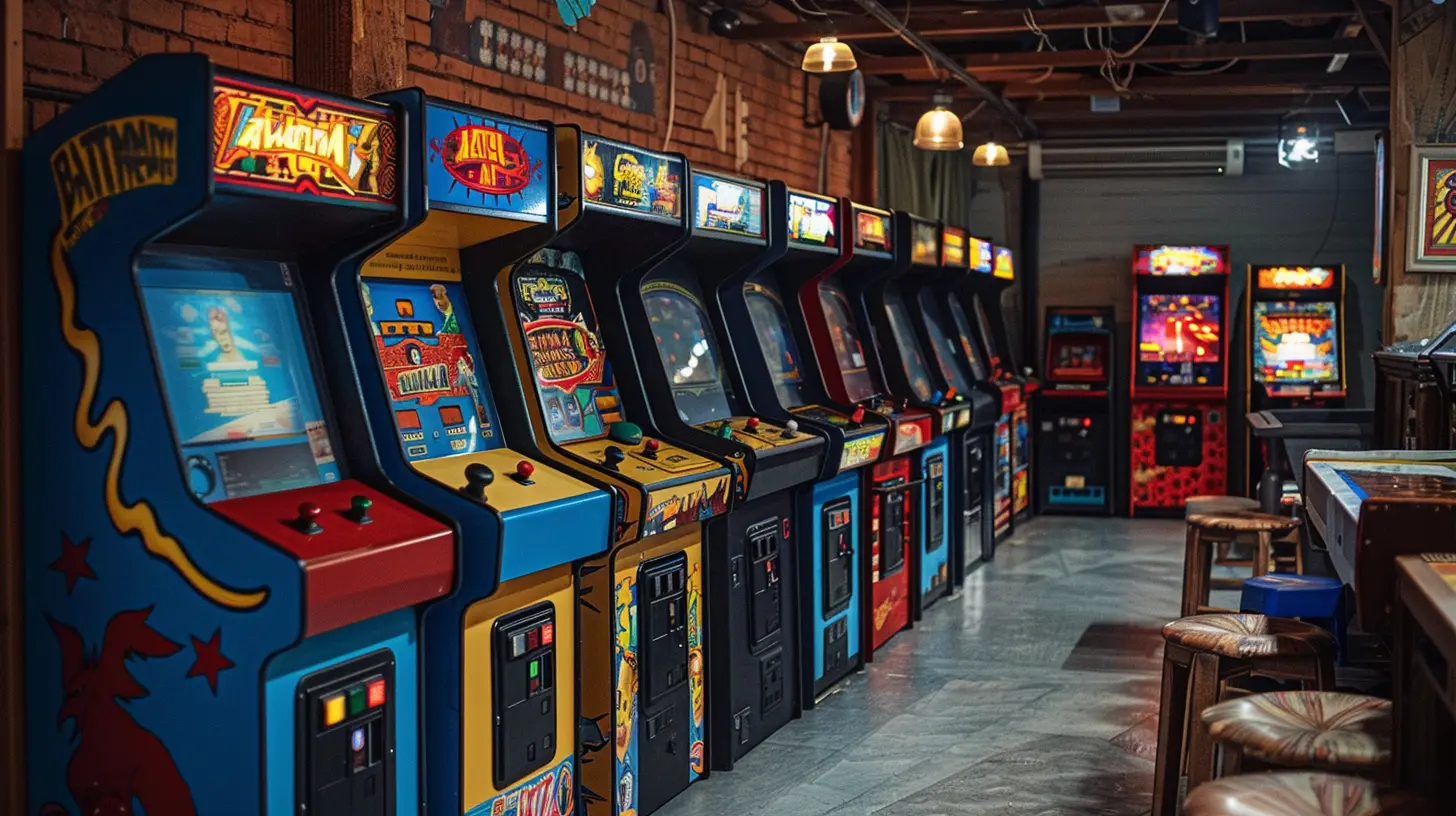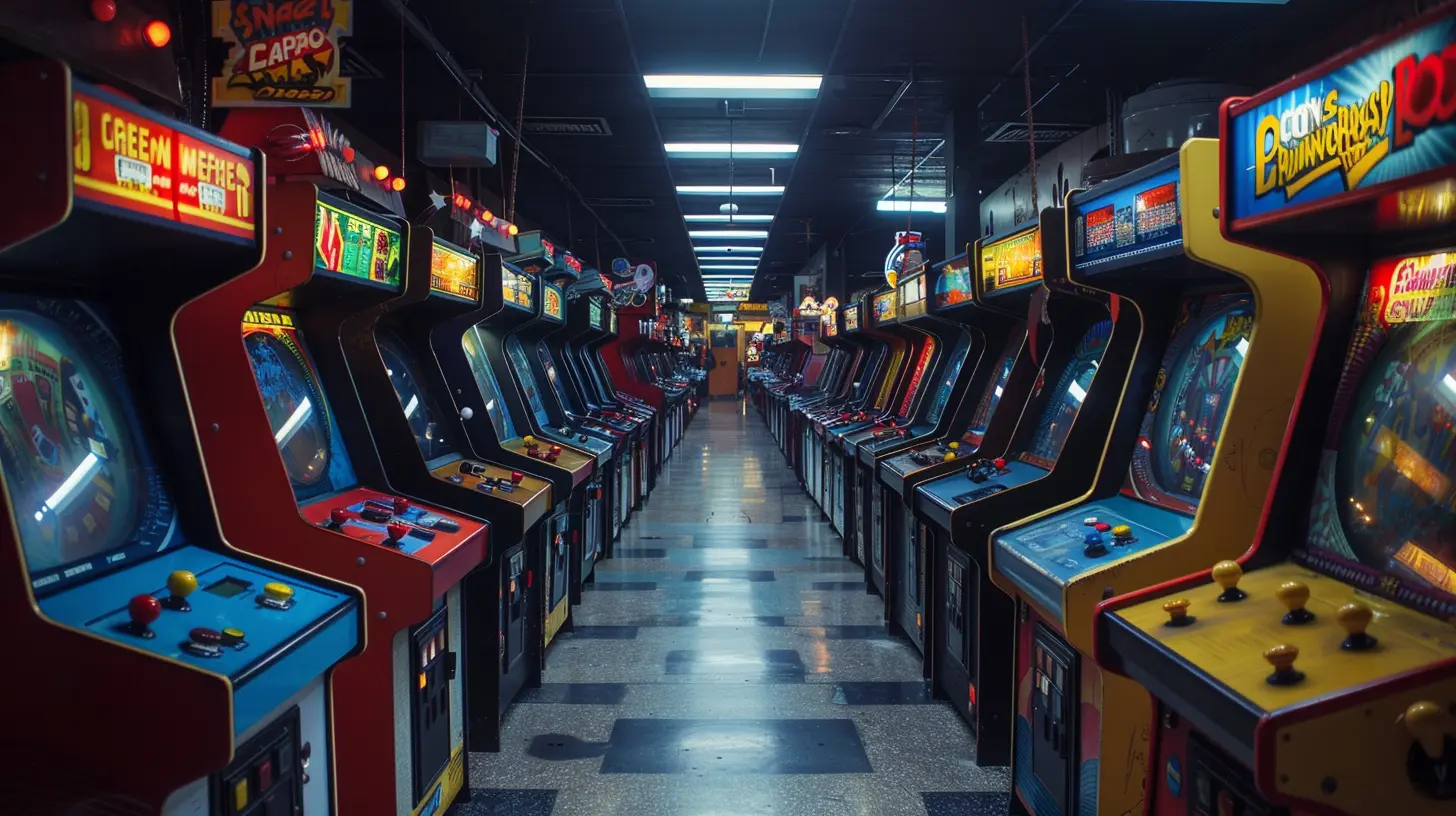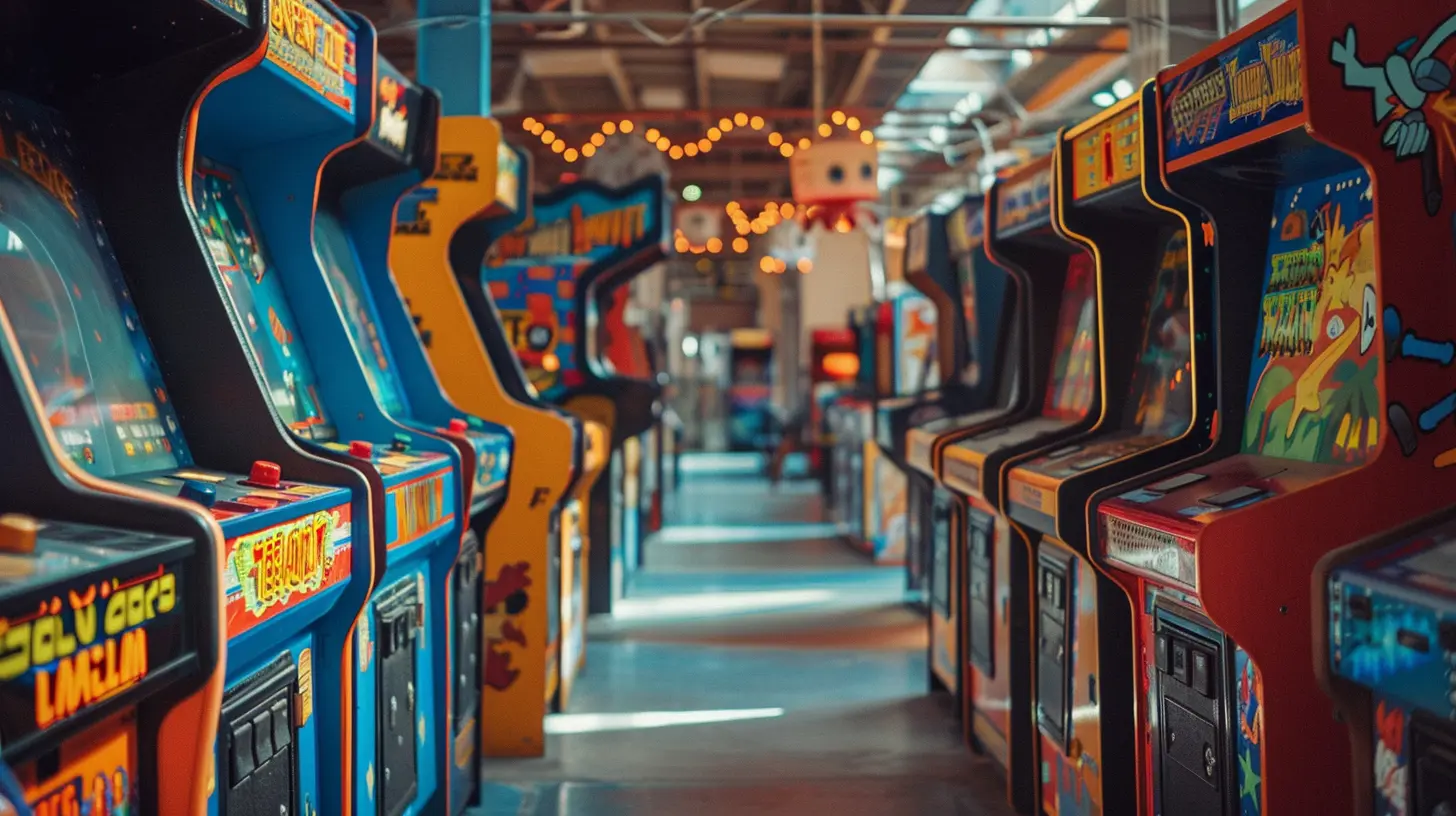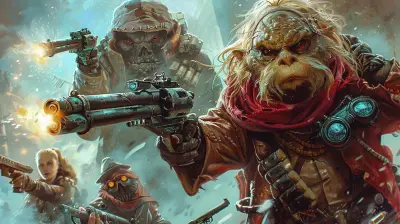How Classic Arcade Machines Shaped Modern Gaming
7 September 2025
When you think about gaming today—full-blown virtual reality battles, cinematic storytelling, global multiplayer matches—it’s almost hard to believe it all started with pixels the size of Lego bricks on chunky screens in dimly lit arcades. Yup, that’s right. Classic arcade machines didn’t just bring gaming into popular culture; they laid the foundation for everything we love about modern video games.
So, how exactly did those coin-guzzling machines with joysticks and glowing buttons shape the complex, immersive games we play today? Let’s take a ride down memory lane and uncover how those arcade legends paved the way for the gaming universe we live in now.
The Birth of Arcade Gaming: Where It All Began
Let’s rewind to the late '70s and early '80s. This was the golden era of arcade gaming. Picture rows of upright cabinets, the loud chiptune music, and that distinct “clink” sound of quarters dropping into machines.Back then, video games weren’t in your pocket or on your PC—they lived in arcades.
Games like:
- Pong (1972)
- Space Invaders (1978)
- Pac-Man (1980)
- Donkey Kong (1981)
- Galaga (1981)
These were the trailblazers. They introduced mechanics we now take for granted: score-based progression, lives, levels, and difficulty ramps. They were simple, sure, but boy were they addictive.
Why It Mattered
Classic arcade machines introduced the world to interactive digital entertainment. For the first time ever, players weren’t just consuming content—they were controlling it.That shift was massive. And it laid the groundwork for all future innovation in gaming.
The Roots of Game Design: Simplicity Meets Depth
Now, let’s talk design. One genius thing about arcade games? They had to be easy to pick up but hard to master. You had to grasp the objective in seconds—because arcades made money from short play sessions.Yet within those limitations, developers managed to squeeze in surprising depth and replayability.
Skill-Based Gameplay Was King
Every time you died in Galaga or missed a jump in Donkey Kong, you knew it was your fault. There were no save points, no hand-holding tutorials. You got better by playing. That skill-based design deeply influenced the game mechanics we still use.Think about modern games like Dark Souls or Cuphead. Brutal? Definitely. But they’re also fair and skill-driven—and that philosophy traces directly back to the arcade era.
High Scores: The Original Social Gaming
Before online multiplayer and global leaderboards, there was the high score table.Seeing your initials at the top of the list in an arcade was a badge of honor. It made games social, competitive, and personal, all without the internet.
Competition Inspired Innovation
Developers started designing games that people wanted to beat each other at. That hunger to be the best pushed both players and developers to constantly level up.Guess what? That spirit is still alive in:
- Speedrunning communities
- eSports
- Ranked matchmaking systems
Whether it's a Twitch stream or a Fortnite championship, the fire to be #1? That’s pure arcade DNA.
Pioneering Genres: Inventing What We Love Today
Arcade machines didn’t just create a type of game—they basically invented every major genre.Let's break it down:
- Platformers? Thank Donkey Kong.- Shooters? Hello, Space Invaders and Galaga.
- Fighting games? Say hi to Street Fighter II.
- Racing games? Remember Pole Position?
Arcade developers were the genre architects, experimenting with format and feedback loops that shaped how entire categories of games are designed even now.
Arcade Controls: The OG User Interface
Let’s not forget the magic at your fingertips—the controls.Joysticks, buttons, trackballs, spinners… those machines made interaction tactile. You weren’t just clicking a mouse or tapping a glass screen, you were physically engaging with the game.
Why That’s Important
Modern VR games? Motion controls? Haptic feedback? All of that stems from the idea of immersive, physical play that arcade cabinets nailed first.Remember the first time you punched the air wearing a VR headset? That feeling of being in the game? Thank arcade controls for that.
Bring on the Flash and Flair: Visual & Audio Innovation
Let’s be real—arcade games weren't just fun. They looked and sounded awesome for their time.Visual Style With Personality
Pac-Man’s ghosts had distinct personalities. Galaga’s alien ships were mesmerizing. That wasn’t just fluff—it was deliberate design to create character, story, and emotional connection.Modern games still follow that principle: give players a world they feel something in.
Chiptune Music = Iconic
Can you hum the Pac-Man or Donkey Kong themes? Bet you can.Sound was a huge part of the arcade experience. Those tunes weren’t just catchy—they set mood, gave feedback, and pulled you deeper into the game.
Nowadays? Game soundtracks are Grammy-worthy. But it all started with those 8-bit bops in the arcade.
The Business of Gaming: Monetization Lessons
Arcade machines were pay-to-play before microtransactions were even a thing.Games were made to be profitable, which meant they had to be engaging enough to make people keep feeding quarters.
Risk vs. Reward Design
This birthed an ingenious design balance—make the game challenging, but never frustrating. Always tempt the player with “just one more try.”Fast forward to now: the same psychology powers in-game shops, season passes, and monetization models in free-to-play games. Love it or hate it, the blueprint came from arcades.
Rise of the Indie Developer: From Garage to Cabinet
Today’s indie game developers owe a lot to arcade pioneers.Back then, small teams—sometimes just one or two devs—produced hit arcade games. They didn’t need Hollywood budgets, just creativity and grit.
Then vs. Now
- Then: A couple of friends coding a shooter in their basement.- Now: A couple of friends coding a pixel-art platformer in their basement.
See the connection? Indie devs still carry the torch of arcade innovation—small teams, bold ideas, and a passion for gameplay over flash.
Games like Celeste, Shovel Knight, or Hotline Miami? You can see the arcade influence all over them.
Legacy in Pop Culture: Timeless Icons
Arcade characters became pop culture royalty. Think about it—Pac-Man, Mario, Ryu, and even Q*Bert became household names long before gaming was mainstream.Why That Matters Today
Franchises like Super Smash Bros thrive on nostalgia, connecting decades of gaming history. And the roots of that cross-generational love? You guessed it: classic arcades.It also shows how games became more than pastimes—they became identity, community, and culture.
Arcades in the Digital Age: Still Alive and Kicking
Surprisingly, arcades didn’t fully disappear. They've just evolved.Now we have:
- Barcades (beer + retro games = heaven)
- eSports arenas
- VR arcades
- Home arcade cabinets
Gaming might be more digital now, but people still crave that physical joy of slapping buttons and chasing high scores.
It’s proof that the spirit of the arcade lives on in both experience and design.
Final Thoughts: Why Arcades Still Matter
Classic arcade machines didn’t just entertain—they inspired. Every button press, every pixel, every coin dropped was a stepping stone toward the gaming galaxy we have today.They taught players to improve, challenged developers to innovate, and created a culture that still thrives.
So next time you boot up your favorite game, think back to that glowing cabinet, that satisfying joystick, and that unbeatable feeling of seeing your name on the high score screen.
Arcades built the beginning—but their blueprint is everywhere in modern gaming.
all images in this post were generated using AI tools
Category:
Gaming NostalgiaAuthor:

Tayla Warner
Discussion
rate this article
1 comments
Nala Velez
What a fantastic read! It’s inspiring to see how classic arcade machines laid the foundation for today’s gaming experiences. Your insights beautifully highlight their lasting impact on the industry. Can’t wait to dive into more articles like this!
September 11, 2025 at 4:10 PM

Tayla Warner
Thank you so much! I'm glad you enjoyed the article and found it inspiring. Stay tuned for more insights!


